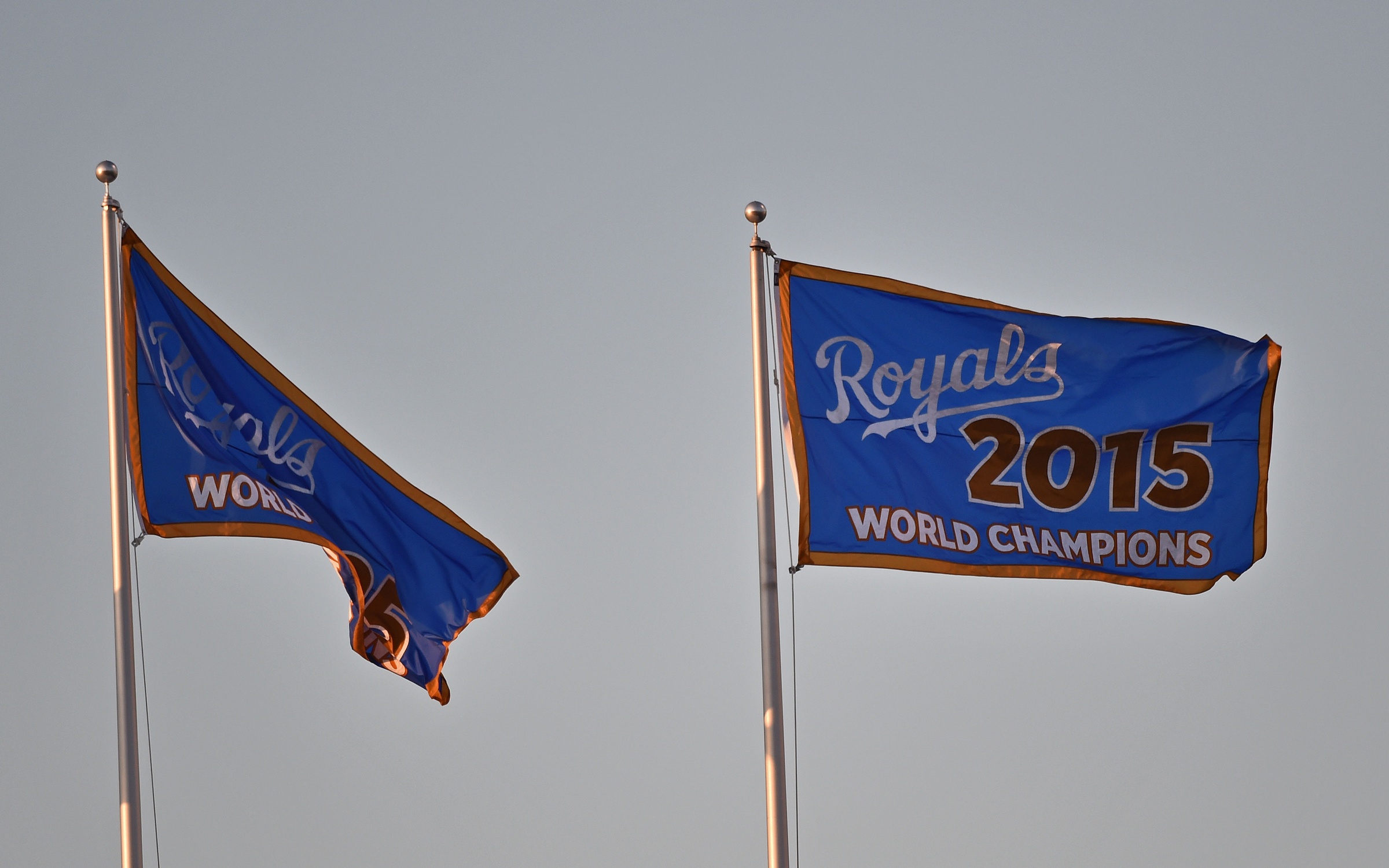Last year, or perhaps more accurately, last winter, the big question was how did the 2015 Royals compare to the other World Series winner in team history, the 1985 edition. No less an authority than George Brett declared the 2015 team the better of the two. I’m not so sure; the 1985 team’s starting rotation would have a decided advantage over their 2015 counterparts, one I’m not sure is offset by the 2015 team’s offensive superiority. But that’s neither here nor there.
As the 2016 team has fallen on hard times, the comparisons have shifted to a bad place: the 1986 team, which not only failed to repeat as World Series champs or even AL West champs, but couldn’t even manage a .500 record, limping home with a 76-86 mark. Whether it’s fatigue from two straight World Series runs, injuries, or just plain bad luck after a run of good fortune, now two generations of Royals fans are finding out that it’s very hard to repeat as champions.
It’s a valid comparison. Both teams had a strong veteran core of position players (yes, the 1985 team had an older core, but the 2015 core had been in the majors for a good long time, too) and almost all of them took a step back the following year. Both championship teams depended on run prevention and getting just enough offense, and when the offensive numbers jumped the following season, they couldn’t keep up. And both teams struggled to find reliable starting pitching.
The 1985 team had 16 players with at least 100 plate appearances. Their average age was 31.25. And of the 11 who played for the Royals in 1986, only four had a better OPS than they had in 1985. Decline was everywhere: Jim Sundberg went from .245/.308/.381 to .212/.303/.322. Willie Wilson dropped from .278/.316/.408 and 43 steals to .269/.313/.366 and 34 steals. Even Brett took a step back, although he would have been hard-pressed to repeat his MVP-caliber 1985 numbers. After a .335/.436/.585 season, he hit “just” .290/.401/.481. He also appeared in 31 fewer games.
The only regulars who improved were Frank White, Lonnie Smith, and Jorge Orta. And of course, Orta was still splitting time at DH with Hal McRae. It’s obviously hard to win when two-thirds of the lineup falls off from the previous year. We’ve certainly seen that with the 2015-2016 Royals, who are getting worse offensive performances this year from just about everyone not named Paulo Orlando. The good news there is that the core of this team is, on average, younger than the 1985-86 teams, and therefore better bets to improve next year.
It’s even harder to repeat when the rest of the league steps up offensively. American League teams averaged 4.56 runs per game in 1985; they averaged 4.61 runs per game in 1986. It’s a modest climb, but enough to hurt a team that wasn’t exactly an offensive juggernaut anyway. After scoring 687 runs in 1985, the Royals fell to 654 the next year. Both times they finished 13th out of 14 AL teams in scoring, but certainly the 1986 team was hurt by having less offense while almost everyone else did better.
Last year, AL teams averaged 4.39 runs per game; the Royals actually were slightly above that at 4.47. This year, AL teams are up to 4.49 runs per game. But the Royals have dropped to 3.84 runs per game. That’s a big difference, almost impossible to make up even if the rotation is solid.
And of course, the 2016 rotation has been a problem, even as they’ve improved a bit recently. Again, the 1986 team is a parallel. Five players combined to start 158 games in 1985; Bud Black was moved to the bullpen for 1986. Of the remaining four, Danny Jackson and Mark Gubicza had a better ERA+ the next year. Now, Charlie Leibrandt and Bret Saberhagen still had an ERA+ over 100, meaning they were above average. But they were much closer to average than they had been: they dropped from 153 and 143 to 104 and 102, respectively. Also, three of the four pitched fewer innings than they had in 1986, and the one who increased his workload (Gubicza) did so by a mere three innings. Compared to the league, the Royals’ pitching actually was pretty good. They allowed the fewest runs in the league, after finishing second in that category in 1985. The problem was that, after allowing 3.94 runs per game in 1985, they allowed 4.15 per game in 1986. Combined with the team’s offensive dropoff, it was just too much to overcome.
But there were a couple of pieces of good news. The 1986 season saw the debuts of future stars Bo Jackson and Kevin Seitzer, plus David Cone, who would be a star elsewhere before returning to Kansas City briefly. Jackson and Seitzer would become key parts of the team the very next season. It would be pretty cool if Cheslor Cuthbert (although he debuted last year), Raul Mondesi, and Matt Strahm could be the 2016 versions of those guys (hopefully with longer careers here). Obviously those players have different strengths and weaknesses, but if this new group can be solid like that one was, the Royals will have a good foundation going forward.
